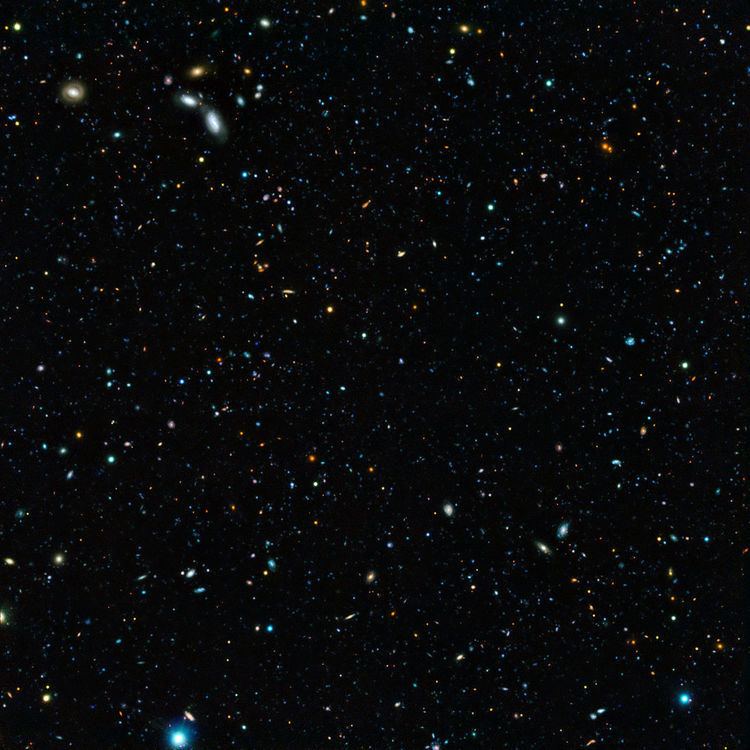 | ||
Website www.stsci.edu/science/goods/ | ||
The Great Observatories Origins Deep Survey or GOODS is an astronomical survey combining deep observations from three of NASA's Great Observatories: the Hubble Space Telescope, the Spitzer Space Telescope , and the Chandra X-ray Observatory, along with data from other space-based telescopes, such as XMM Newton, and some of the worlds most powerful ground-based telescopes.
Contents
GOODS is intended to enable astronomers to study the formation and evolution of galaxies in the distant, early, universe.
The Great Observatories Origins Deep Survey consists of optical and near-infrared imaging taken with the Advanced Camera for Surveys on the Hubble Space Telescope, the Very Large Telescope and the 4-m telescope at Kitt Peak National Observatory; infrared data from the Spitzer Space Telescope. These are added to pre-existing x-ray data from the Chandra X-ray Observatory and ESAs XMM-Newton, two fields of 10' by 16'; one centered on the Hubble Deep Field North (12h 36m 55s, +62° 14m 15s) and the other on the Chandra Deep Field South (3h 32m 30s, -27° 48m 20s).
The two GOODS fields are the most data-rich areas of the sky in terms of depth and wavelength coverage.
Instruments
GOODS consists of data from the following space-based observatories:
Hubble Space Telescope images
GOODs used the Hubble Space Telescope's Advanced Camera for Surveys with four filters, centered at 435, 606, 775 and 850 nm. The resulting map covers 30 times the area of the Hubble Deep Field to a photometric magnitude less sensitivity, and has enough resolution to allow the study of 1 kpc-scale objects at redshifts up to 6. It also provides photometric redshifts for over 60,000 galaxies within the field, providing an excellent sample for studying bright galaxies at high redshifts.
Herschel
In May 2010, scientists announced that the infrared data from the Herschel Space Observatory was joining the GOODS dataset, after initial analysis of data using Herschel's PACS and SPIRE instruments. In October 2009, Herschel observed the GOODS-North field, and in January 2010 the GOODS-South field. In so doing, Herschel identified sources for the Cosmic Infrared Background.
